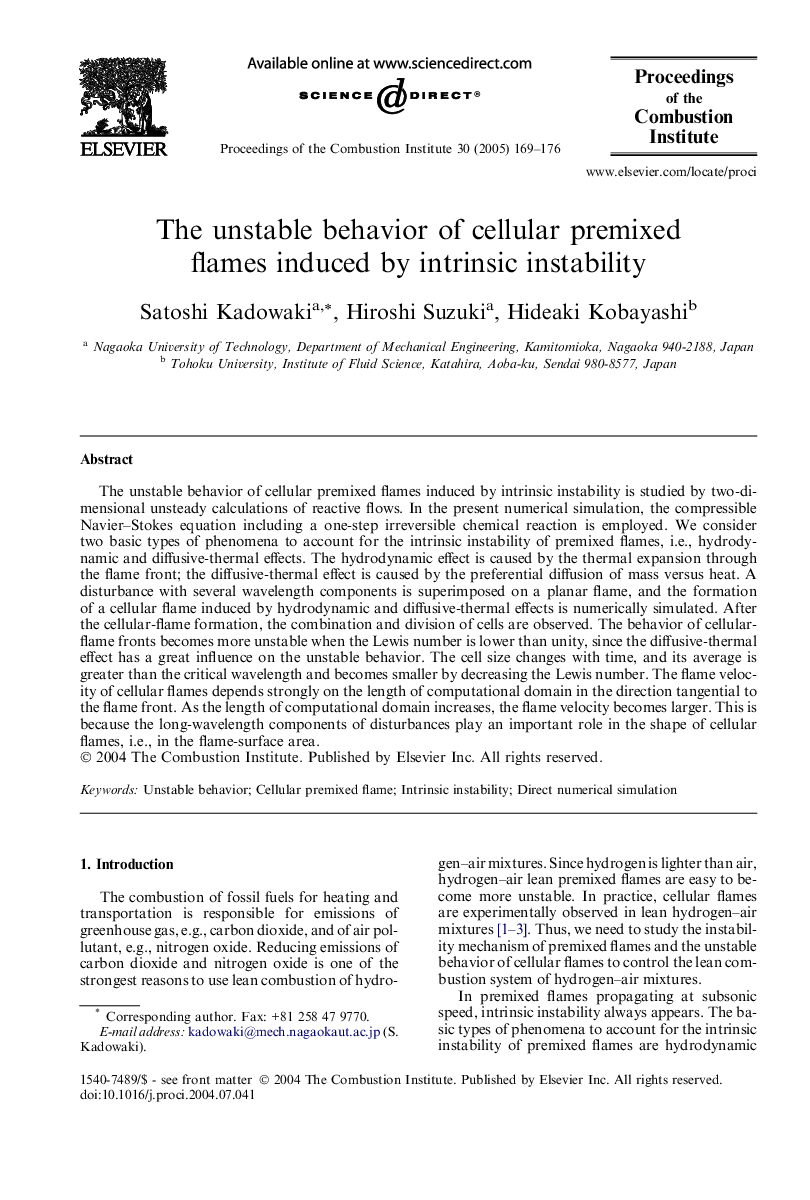| Article ID | Journal | Published Year | Pages | File Type |
|---|---|---|---|---|
| 9637332 | Proceedings of the Combustion Institute | 2005 | 8 Pages |
Abstract
The unstable behavior of cellular premixed flames induced by intrinsic instability is studied by two-dimensional unsteady calculations of reactive flows. In the present numerical simulation, the compressible Navier-Stokes equation including a one-step irreversible chemical reaction is employed. We consider two basic types of phenomena to account for the intrinsic instability of premixed flames, i.e., hydrodynamic and diffusive-thermal effects. The hydrodynamic effect is caused by the thermal expansion through the flame front; the diffusive-thermal effect is caused by the preferential diffusion of mass versus heat. A disturbance with several wavelength components is superimposed on a planar flame, and the formation of a cellular flame induced by hydrodynamic and diffusive-thermal effects is numerically simulated. After the cellular-flame formation, the combination and division of cells are observed. The behavior of cellular-flame fronts becomes more unstable when the Lewis number is lower than unity, since the diffusive-thermal effect has a great influence on the unstable behavior. The cell size changes with time, and its average is greater than the critical wavelength and becomes smaller by decreasing the Lewis number. The flame velocity of cellular flames depends strongly on the length of computational domain in the direction tangential to the flame front. As the length of computational domain increases, the flame velocity becomes larger. This is because the long-wavelength components of disturbances play an important role in the shape of cellular flames, i.e., in the flame-surface area.
Related Topics
Physical Sciences and Engineering
Chemical Engineering
Chemical Engineering (General)
Authors
Satoshi Kadowaki, Hiroshi Suzuki, Hideaki Kobayashi,
